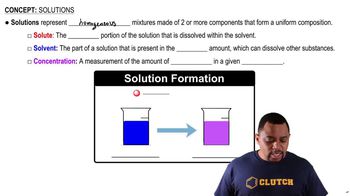A semipermeable membrane separates two compartments, A and B. If the levels in A and B are equal initially, select the diagram that illustrates the final levels in a to d:
<IMAGE>
 Verified step by step guidance
Verified step by step guidance Verified video answer for a similar problem:
Verified video answer for a similar problem:

